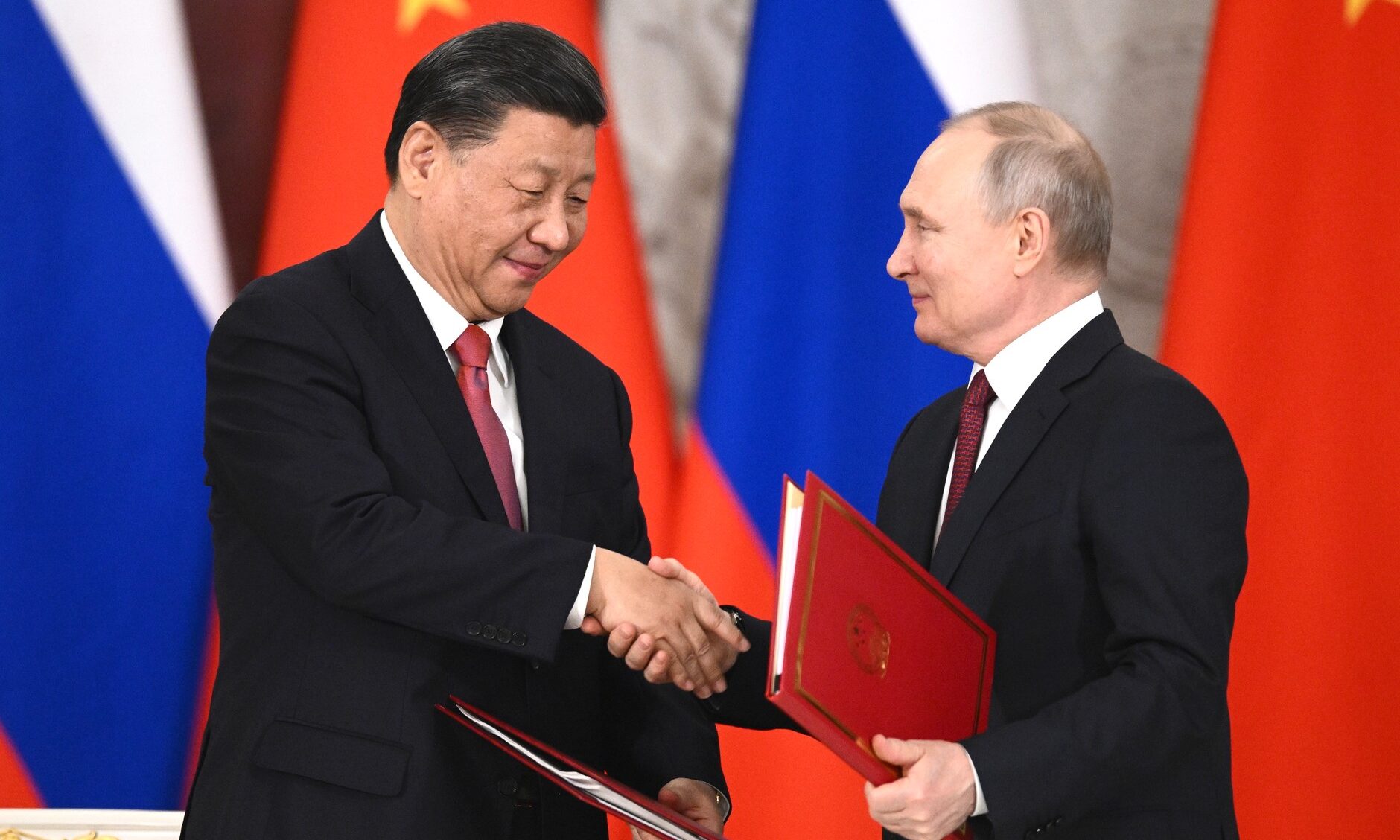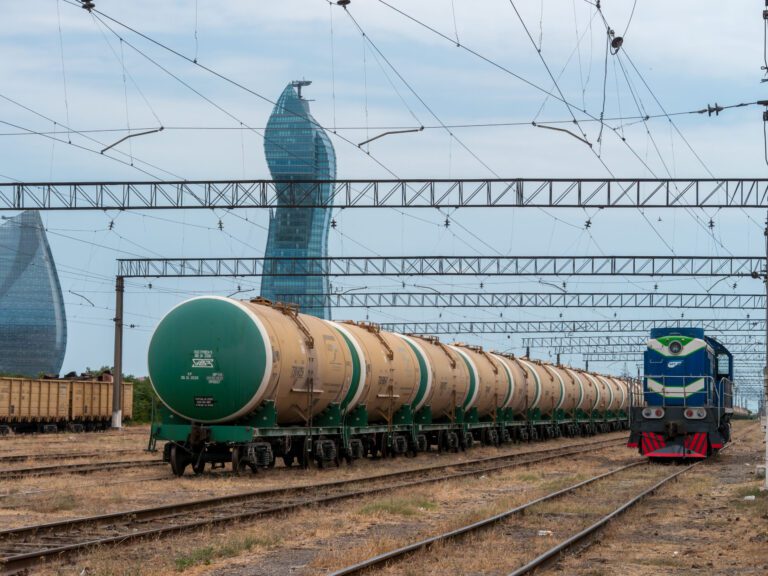
This article is part of a series of articles authored by young, aspiring China scholars under the Future CHOICE initiative.
During the week commencing November 11, representatives from over 50 international military enterprises gathered at the Zhuhai Aviation Summit in China to showcase their latest technological developments in the field of defense and security. Beijing’s invitation to Moscow to participate in the summit, alongside the significant attention paid to Russia’s military arsenal, raises questions about the nature of Sino-Russian military-technological cooperation.
While China continues to characterize its policy toward Russia as cautious and relatively neutral, Russia’s inclusion at the Zhuhai Aviation Summit may suggest otherwise – particularly in the context of the countries’ reported desire for future strategic cooperation in space, defense, and aviation innovation. Russia’s exclusion from other international defense fora makes its participation at the Zhuhai Summit even more significant. Recent summits convened by BRICS and the Shanghai Cooperation Organization (SCO) in October further highlighted ongoing infrastructural, economic, and trade agreements between the two countries.
The Takeaways
Much enthusiasm was reportedly shown toward Russia’s military arsenal and new technologies by the Chinese hosts, who expressed interest in Russia’s military aviation technologies. Among the highlights were medium-range air defense systems and the state-of-the-art Su-57 fighter aircraft, which captivated much of the audience’s attention. Piloted by Sergei Bogan – the chief test pilot for Sukhoi, Russian aircraft manufacturer – the Su-57 represents a leap forward in Russian aviation technology, featuring an innovative design that integrates multiple radar systems concealed within its wings and fuselage, allowing the pilot to maintain continuous 360-degree situational awareness. Equally prominent were the Viking systems, designed to neutralize strategic and tactical aircraft, helicopters, and cruise missiles, as well as other anti-aircraft missile systems capable of targeting surface and ground-based radio-contrast assets.
The Russian Gazette, the official government newspaper of Russia, reported that such technologies, particularly the Su-57, mark a potential milestone for Sino-Russian collaboration in aerospace and defense innovation, with notable opportunities in aircraft engine manufacturing and space exploration. According to Mikhail Babich, Deputy Head of the Federal Service for Military-Technical Cooperation, Russia is prepared to engage with China in co-production agreements involving cutting-edge weaponry, including systems tested in operational theatres.
Babich’s statement points to a new development in the partnership between the two countries, which has previously proceeded cautiously, at least when it comes to military cooperation. However, when viewed in the context of broader regional developments, Russia’s participation at the summit – and the potential implications of its participation – appears as part of a broader trend of Sino-Russian relations extending beyond economic policies, diplomatic ties, and trade agreements. Recent Sino-Russian joint anti-submarine and air-defense drills in the northwestern Pacific, as part of a larger set of collaborative military exercises, demonstrate increased regional security integration.
Additionally, the language used in Russian media when discussing the potential for Sino-Russian aerospace cooperation often parallels that of the Cold War-era space race discourse. The summit’s symbolic weight should therefore be situated within a broader political and ideological context. The BRICS summit in October echoed such language and themes, with its emerging economies, including Russia and China, positioned to play leading roles in a so-called multipolar order through joint initiatives and continued cooperation. The gathering of Brazil, China, Russia, India, South Africa, and others, saw Xi Jinping and Vladimir Putin praise the apparently ever-growing partnership between Beijing and Moscow, emphasizing its contribution to global stability.
Underpinned by this ideological and political context, the significance of the Zhuhai Aviation Summit is also marked by Russia’s continued expulsion from other global defense fora due to its continued aggression against Ukraine, which has stripped Russia of its ability to showcase its military strength in what might otherwise be considered a neutral setting. As Russian media coverage of the summit – led by the Russian Gazette – demonstrated, the event played an important role in shaping Moscow’s strategic efforts to assert itself as a leader in military technology, particularly amidst the geopolitical isolation it continues to face.
Russia’s removal from the Generation IV International Forum, an initiative focused on next-generation nuclear reactor development, further underscores the opportunity offered by the Zhuhai Summit for Moscow to solidify its partnerships, particularly within the Eurasian region. The absence of Western aerospace giants like Boeing at the summit further bolstered the narrative of Russian technological prominence and, according to Russian national newspapers (including Russian Gazette, Izvestia, Kommersant), revealed much about China’s growing support for and alignment with Russia. As noted by Chernyak, a reporter for Russian Gazette: “For the first time in many years, there is no Boeing at the exhibition. It’s like a world auto show without Mercedes, although this no longer seems unbelievable.”
Beijing’s Foreign Policy
Despite signs of deepening regional cooperation, exemplified by events such as the Zhuhai Aviation Summit, Beijing continues to present a responsible approach in its diplomatic relations with Russia. This stance was reiterated by Beijing’s spokesperson Lin Jian in response to recently reported claims by Politico that the EU intelligence had uncovered a Chinese factory producing military drones allegedly supplied to Russia for use in Ukraine.
While these allegations remain unsubstantiated, they have led to EU scrutiny of Beijing’s awareness and potential complicity in these activities. EU officials are investigating whether such actions signal a departure from China’s publicly neutral stance on the Ukraine conflict. In response, Lin Jian emphasized China’s “responsible approach” to exporting military and dual-use goods, stating that China does not supply arms to parties involved in the conflict and continues to advocate for peace negotiations. Lin further stated that “China has always maintained an objective and fair position on the Ukrainian issue. We actively call for peace and commencement of negotiations.”
While the nature of Sino-Russian military cooperation in this regard is yet to be investigated by the EU, cooperation between the two has strengthened in other areas. Notably, the China-Russia natural gas pipeline is nearing completion, with Russian gas expected to power households in Shanghai by the end of this year. The final section of the 5,111-kilometer East-Route pipeline, linking Heilongjiang province to Shanghai, has been completed, marking a significant milestone in the tightening economic ties between the two countries. The project, hailed as a signature achievement, underscores Russia’s role as a vital energy supplier to China, with the pipeline expected to deliver stable natural gas supplies to 130 million households annually. The completion of the pipeline not only signifies infrastructural and economic interdependence between the two countries but symbolizes a promise of future cooperation. The pipeline also contributes to regional energy diversification and growing independence from Western infrastructure, arguably an ideological move as much as an economic one.
Moscow’s Think-Tank Perspective
A report from the Valdai International Discussion Group, a Moscow-based think tank, states: “The center of energy consumption is shifting from the developed countries, united under the G7 brand, to the so-called emerging markets.” BRICS’s energy demand surged by 190 percent to 276 exajoules in the last thirty years, and its share of the total now exceeds 45 percent, suggesting that “the roles of the First World and developing world leaders are reversed.” The Valdai International Discussion Group’s event, held in October and attended by over 140 global experts, framed these discourses within a program centered on bilateral relationships within the Eurasian region.
The Sino-Russian relationship was presented as an example of a new international order, one that could be suitable for “the entire planet,” according to Timofey Bordachev, program director at the Valdai Discussion Club. Russian social media discussions, particularly on the Vkontakte platform, highlight the Valdai Discussion Club as a symbol of regional intellectual leadership, agency, and independence, as well as a defender of freedom of speech – a key pillar of Russian traditional values, which, according to Putin, are protected by BRICS alliances and the SCO, both of which are representative of the newly emerging world order.
Looking Ahead
Given these recent developments, it is plausible to anticipate future cooperation between China and Russia on the military-technological innovation front. While the exact nature of this cooperation is yet to unfold, the Zhuhai Aviation Summit clearly indicated the countries’ interest in each other’s military and aerospace expertise, as reported on by Russian national media. To some extent, the summit signified a further solidifying of what Putin has on many occasions called a friendship between Moscow and Beijing and served as a form of ego-boost for Russia’s military-industrial complex – especially considering its exclusion from the international military and aerospace innovation arenas.
Written by
Markéta Vašíčková
Markéta Vašíčková holds a Bachelor of Arts in Human, Social and Political Sciences from the University of Cambridge. Her areas of interest include Sino-Russian relations, and the influence of Russia in the Central and Eastern European region.


